Anders Beer Wilse and the Storting
The Storting building will soon be celebrating its 150th anniversary. Completed in 1866, it is an integral part of the Oslo cityscape and the public consciousness. During a long and illustrious photographic career, Wilse caught the mood of life around the Storting at the start of the 20th Century.
Anders Beer Wilse was born in Kragerø, southern Norway, in 1865, just a year before the Storting building was opened. He is renowned as one of Norway’s greatest landscape photographers, and was greatly influential in creating the image of Norwegian outdoor life that exists to this day. At the same time, he also took a huge number of other photos, from portraits to depictions of urban and country life.
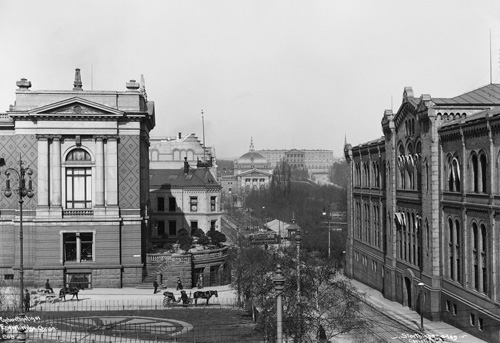
Wessels plass in 1901, with the Storting on the right and the Royal Palace and National Theatre in the background.
He also showed a keen interest in modernization and progress, taking numerous photos of boats, cars and other innovations of the time.
At his death in 1949, Wilse’s photographic collection contained more than 200 000 images. Today, much of Wilse’s collection is available online at DigitaltMuseum, Oslobilder and Galleri NOR, the National Library’s photographic archive. Wilse’s own photographic archive was added to Norges dokumentarv – the national version of UNESCO’s Memory of the World programme – in 2014.
To mark the Wilse jubilee, Oslo City Museum has put on a separate exhibition dedicated entirely to his Oslo works. The photos displayed here have been taken from the Oslo Museum’s collection.
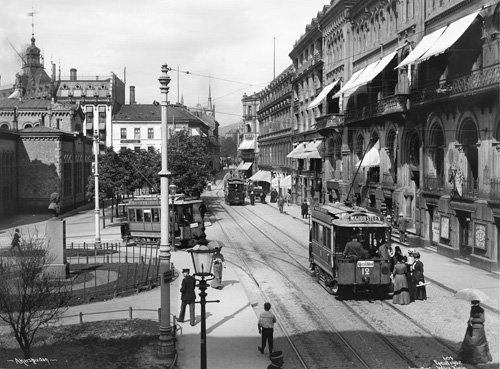
Wessels plass as seen from Akersgata in 1902. On the left we can see what the back of the Storting looked like before the low building was replaced by a larger annexe in the 1950s.
Wilse took the photos between 1901 and 1937. The images portray life around the Storting – complete with horses, trams, cars and pedestrians – from Karl Johans gate, Akersgata, Wessels plass and Prinsens gate.
Photos on the hoardings
During the summer months, large format versions of the images selected by the Storting are being displayed on hoardings in Akersgata. The hoardings surround Wessels plass, which has been turned into a building site as a result of the major renovation project taking place in Prinsens gate 26.
Today, Wessels plass finds itself in the midst of the various buildings disposed of by the Storting, with the main building on the one side and the Storting Block on the other. The square has had several facelifts, most recently in 2005 in connection with the centenary of the dissolution of the Union with Sweden. It will be opened again in brand new splendour in 2018.
Wilse documented Wessels plass for several decades from the early 1900s. The photos below and the two above show how the square changed between 1901 and 1937. The final images show the Storting building and Karl Johans gate from 1912 to 1937.
Wessels plass
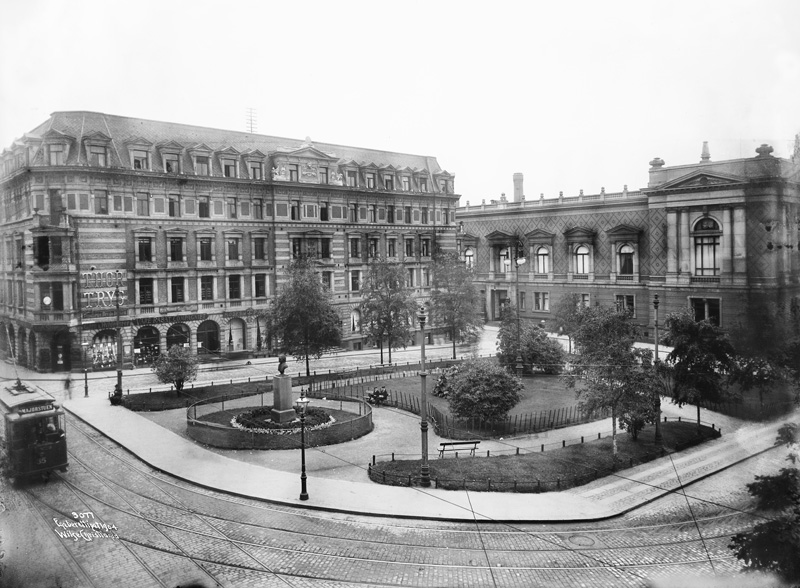
The photograph above was taken in 1904. It shows Wessels plass and Prinsens gate 26, both of which are currently under reconstruction. The square was named after the poet Johan Herman Wessel (1742–1785). A bust of the poet took pride of place in the centre of the square until it was moved nearer the Storting building.
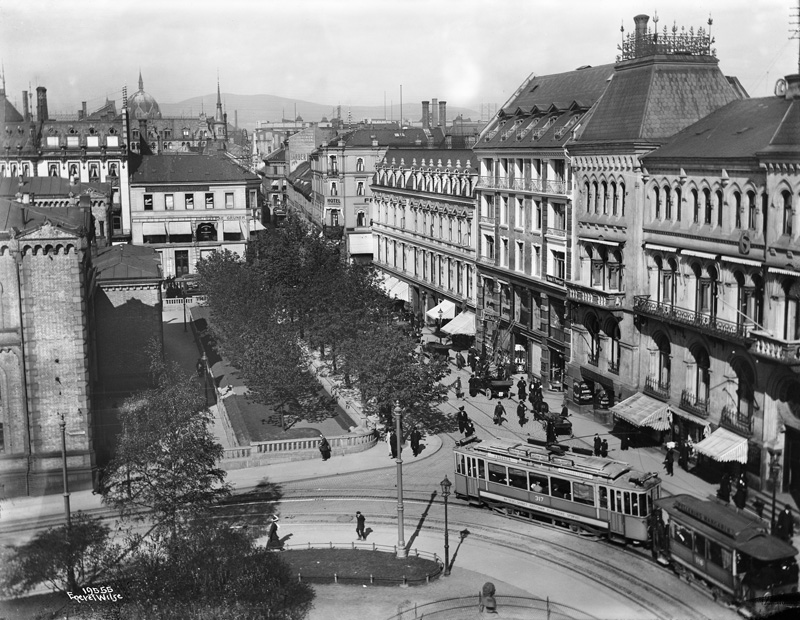
The image above shows Wessels plass as seen from Prinsens gate in around 1914. The original back of the Storting building, with the old park, is clearly visible.
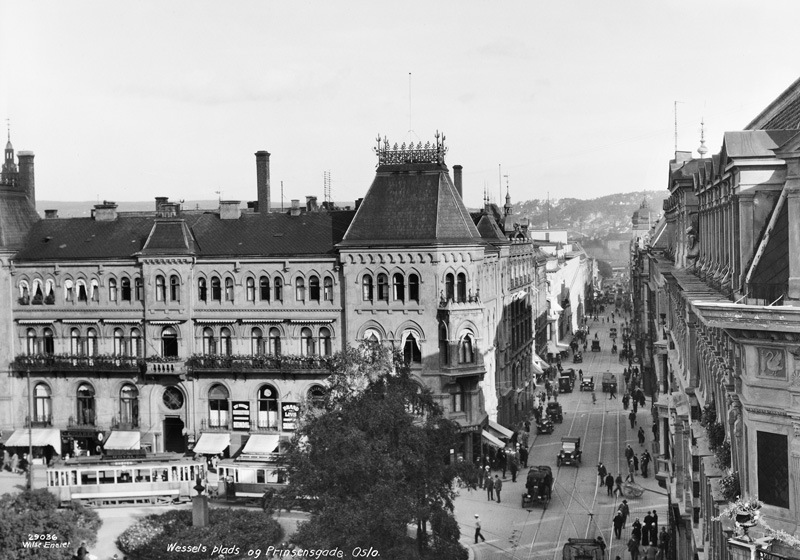
Cars had become a common feature of urban life by the time the photo above was taken in 1926. It shows Wessels plass and Prinsens gate. Behind the tram in Akersgata is the building that today houses the Storting’s standing committees.
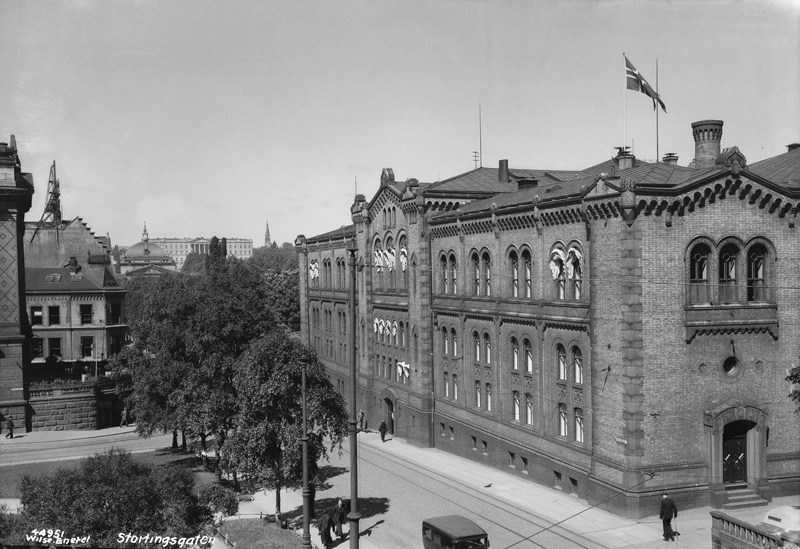
Initially, the tramlines and road went round Wessels plass, and Stortingsgata continued along the side of the Storting all the way to Akersgata. This photo dates from 1937.
Karl Johans gate
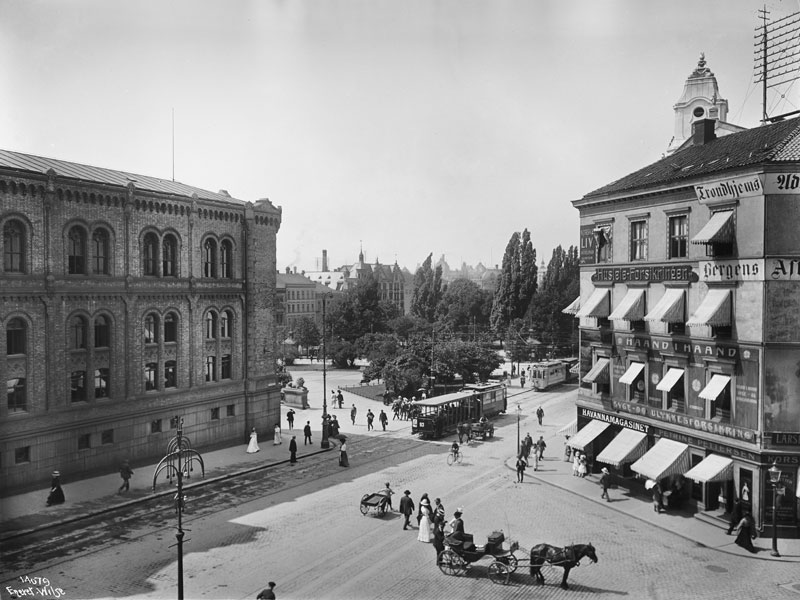
The photograph above, taken by Wilse in 1912, shows the Storting overlooking Karl Johans gate. In the background Eidsvolls plass and one of the carved lions of Løvebakken in front of the Storting are visible.
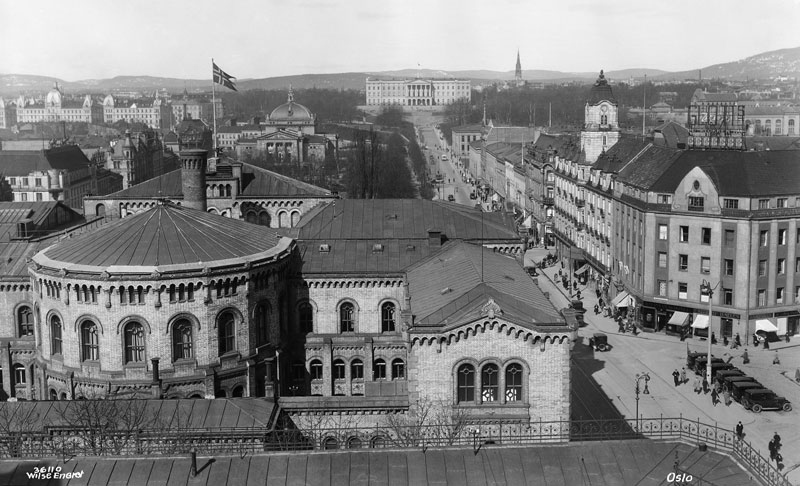
Wilse was 65 when he made his way up to the roof of one of the buildings on Akersgata to capture a bird’s-eye view of the Storting and Oslo city centre. The year was 1930.
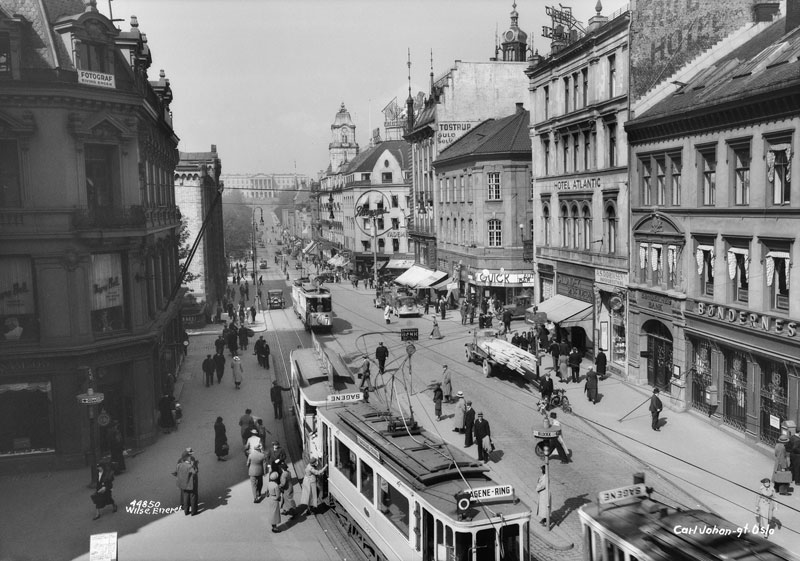
For many years Egertorget was a junction for the city’s trams. The photograph above dates from 1937. The Storting’s façade facing Karl Johans gate is visible on the left.
This online presentation has been compiled by the Storting Archives. All the photographs were taken by Anders Beer Wilse and are reproduced with the kind permission of Oslo Museum.
Last updated: 02.07.2015 10:16